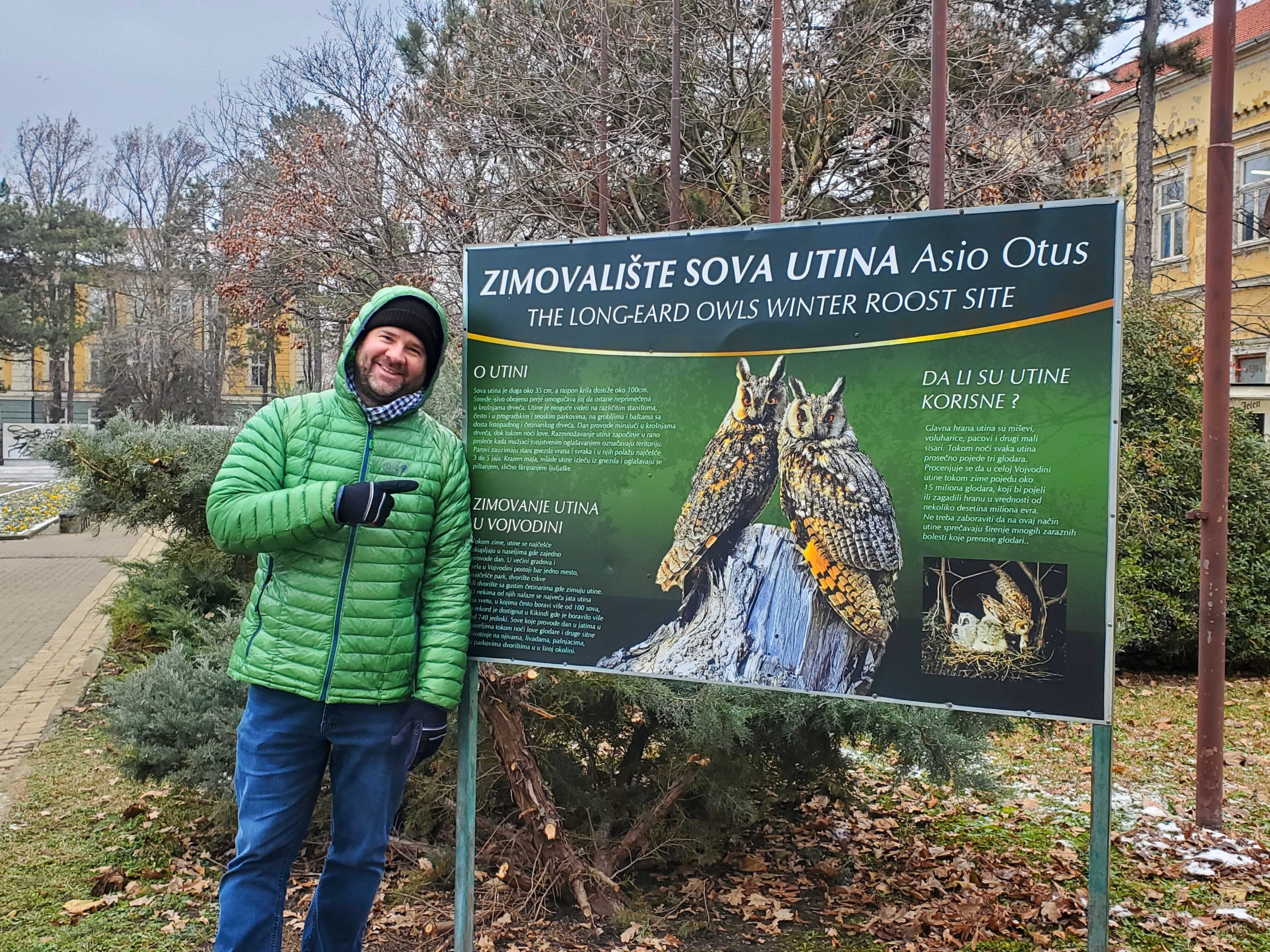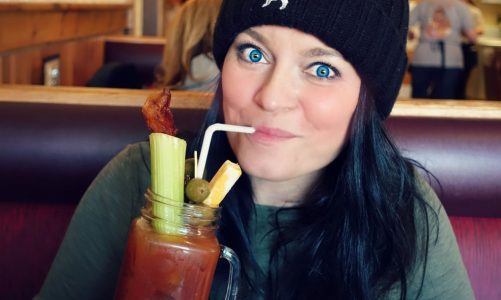A unique wildlife adventure can inspire travelers to journey to some of the most remote places or obscure destinations around the globe. This is how Kikinda, the undeclared “Owl Capital of the World,” got added to our bucket list!
The opportunity to be surrounded by hundreds of rare, elusive Long-eared Owls lured us to this small town in northern Serbia. However, while ecstatic that we finally made it to Kikinda, there were a few things that we wished we had known before our visit.
Fortunately, there is a lot of information online regarding the long-eared owls. This makes it easy to learn about these beautiful creatures before visiting Kikinda. However, “blogging birders” fail to share tips that make visiting this obscure corner of Serbia easier for the everyday traveler.
Our Journey to the Owl Capital of the World
Let us share some insider truths and funny stories to help make your Kikinda own safari a success but first let’s discuss how we got there.
Our journey started in Barcelona, Spain where we landed a cheap flight on Skyscanner for $42 per person with checked luggage, to Belgrade, Serbia. Being our third time in Belgrade, we simply enjoyed the ambiance. Upon landing, we were quickly transferred using intui.travel to our really nice apartment rental in the city center.
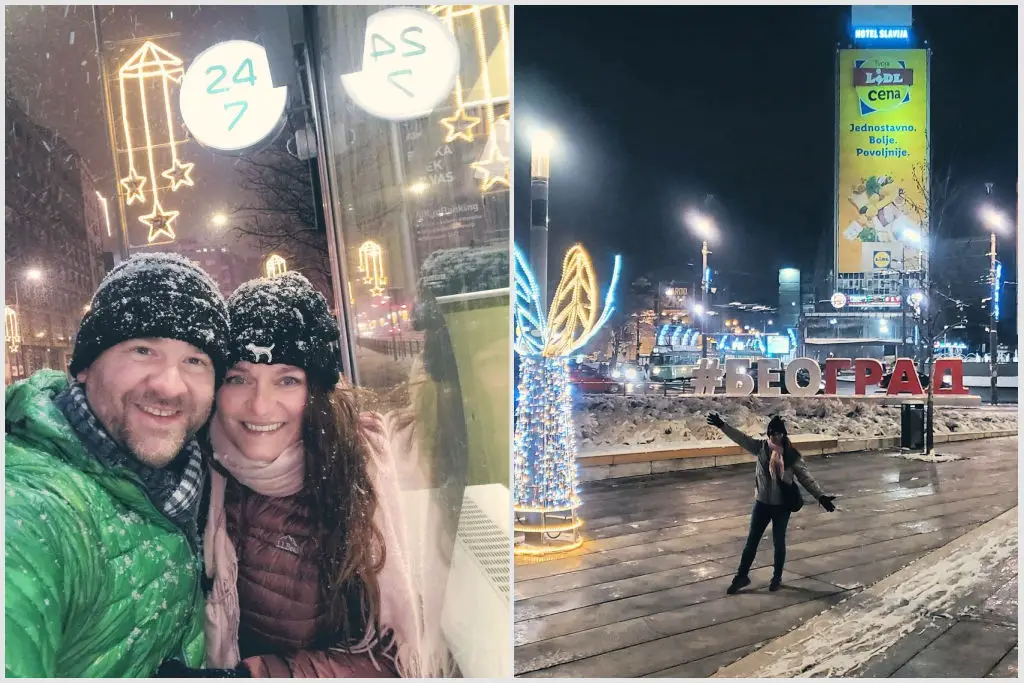
We spent a few days exploring the city’s lively atmosphere, strolling along Knez Mihailova Street during the year’s biggest snowstorm, and admiring the historic Belgrade Fortress. Of course, we indulged in Serbian cuisine in the Skadarlija neighborhood, known as the Bohemian Quarter. If it’s your first time in Belgrade, we’re going to recommend a couple of tours to go on.
Take a Guided Tour
Guided tours enrich your experience with insights, local knowledge, and captivating stories that deepen your appreciation of the city’s culture. These three tours are optimal for gaining a comprehensive insight and exploring the city extensively. Also, they provide a solid foundation, making you feel more confident to venture and discover on your own later.
- 😋 Go on a Food Tour: Discover Belgrade’s culture through food on this guided walking tour. Sample Serbian delights, sip rakija, and learn local history and traditions.
- 🔨 Learn About Communism: Embark on this guided tour exploring Serbia’s communist era. Visit historic sites, hear legends, and discover the intriguing legacy of Tito’s leadership.
- 🚢 Take a Sunset Cruise: Enjoy this 1.5-hour cruise in Belgrade! Sail the Danube and Sava rivers, soak in city views, and hear fascinating commentary.
On to Kikinda to See Long-eared Owls!
We made our way back to Nikola Tesla International Airport where we rented a car for three nights. Our itinerary included one night in Kikinda and two nights in Novi Sad. We ended up paying USD 35 ($12 per day) for the rental car using Discover Cars to make a cheap reservation.
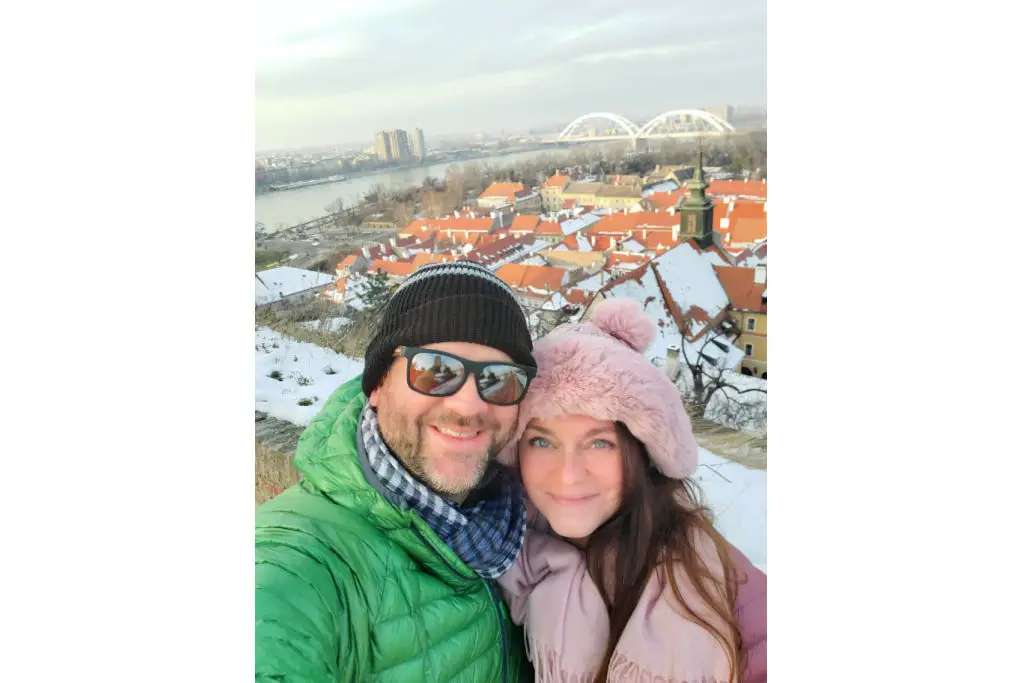
It’s about a two-hour drive from the airport to Kikinda. One thing you’ll quickly notice is how flat everything is. This is because unlike in the south where it’s mountainous, in northern Serbia lies a captivating expanse—the Vojvodina region.
The Vojvodina region lies in the Pannonian Basin, an expansive and relatively featureless landscape. This vast area has flat fields stretching as far as the eye can see, reminding us of Illinois. The terrain is generally low-lying, with minimal elevation changes, creating a panoramic and open vista. Of course, this is the perfect hunting ground for birds of prey—on the way to Kikinda, we saw dozens, nearly one of every mile.
When we got to Kikinda, on January 12, we expected a bustling scene with wildlife enthusiasts. In reality, it was a quiet town, even during the peak of the long-eared owl roosting migration. Pulling up to our accommodation, Apartman Vila Milica which was spotless, spacious, comfortable, and hosted by the loveliest lady, we settled in and prepared ourselves to explore the area.
🏨 Apartman Vila Milica > Check Availability
By the way, just a few steps from the apartment, right around the corner, is a bakery with the freshest chocolate-filled donuts. It’s a great choice for an easy grab-and-go breakfast.
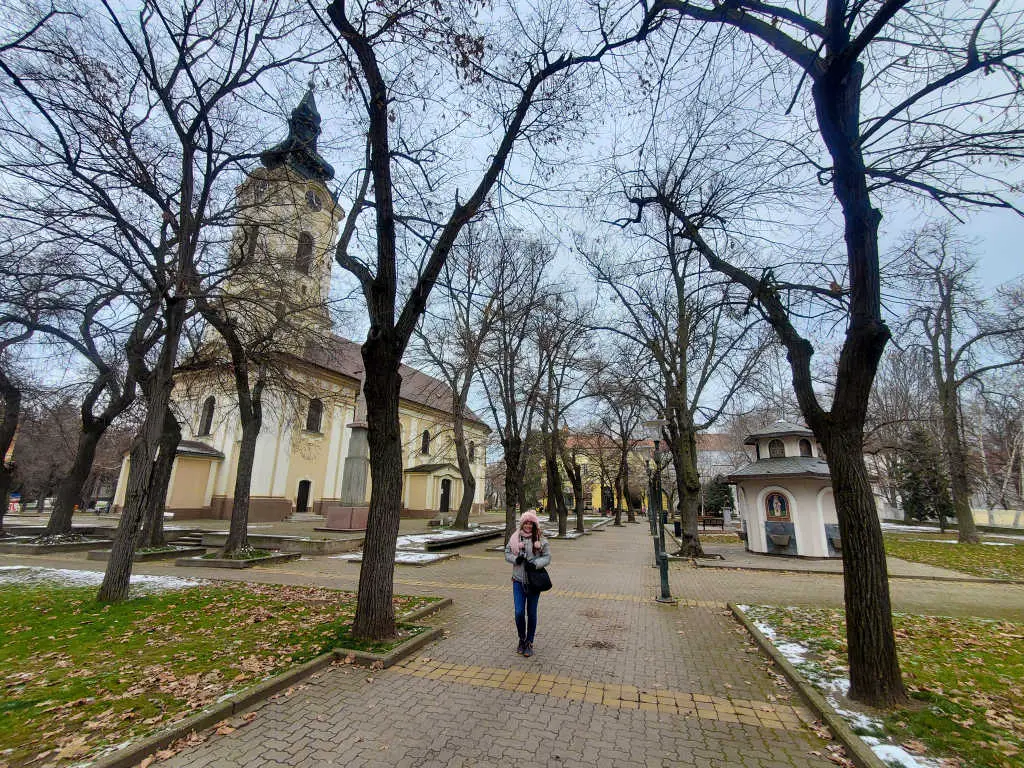
Tap Water is Hazardous
Upon arrival, we were shocked to learn something that impacts each traveler’s experience in Kikinda. The city sits inside the Vojvodina, the province with Serbia’s most toxic water supply.
For over two decades, locals have been fighting to get clean water. Unfortunately, this goes beyond mineral content or clarity. Testing reveals that both carcinogenic substances and harmful bacteria are found in tap water samples. These include toxins such as arsenic, ammonia, bacteria, iron, and fecal matter.
Here’s an alarming fact: only 10% of wastewater is treated in Serbia. The remaining 90% gets funneled back into the rivers. This explains why the municipal water supply has high amounts of ammonia, bacteria, and fecal matter.
Does Kikinda Have Safe Drinking Water
To best describe it, not only does Kikinda’s tap water have a heavy sulfur smell, but it also leaves a heavy oily residue on the body. Moreover, there has been documented evidence that sometimes there is such high amounts of methane that locals manage can set the running tap water on fire.
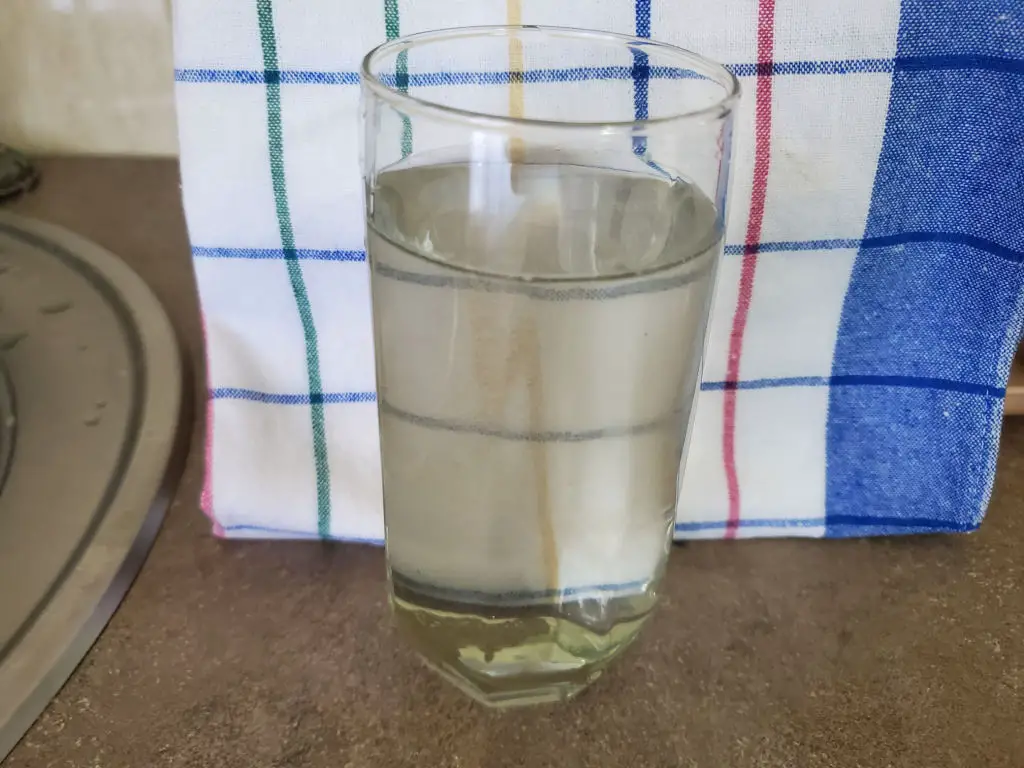
Sadly, the tap water appeared so compromised that we didn’t even want to wash our hands or face with it. Therefore, with bathing questionable, and uncertain how restaurants and cafes manage the water situation, one night was just the right amount of time to spend in Kikinda.
How to Handle the Water Situation
First, no matter where you stay in Kikinda, the water situation will be the same. Even reviews from the top hotels in the city get complaints about the water. Thankfully, our host left us a welcome package with bottled water which helped get us started. Our accommodation also had a nice kitchen where we could prepare our meals.
Second, considering the importance of clean drinking water, we backpack with a travel-sized reverse osmosis filter. Otherwise, stock up on bottled water which is surprisingly expensive considering a 20-year dire situation.
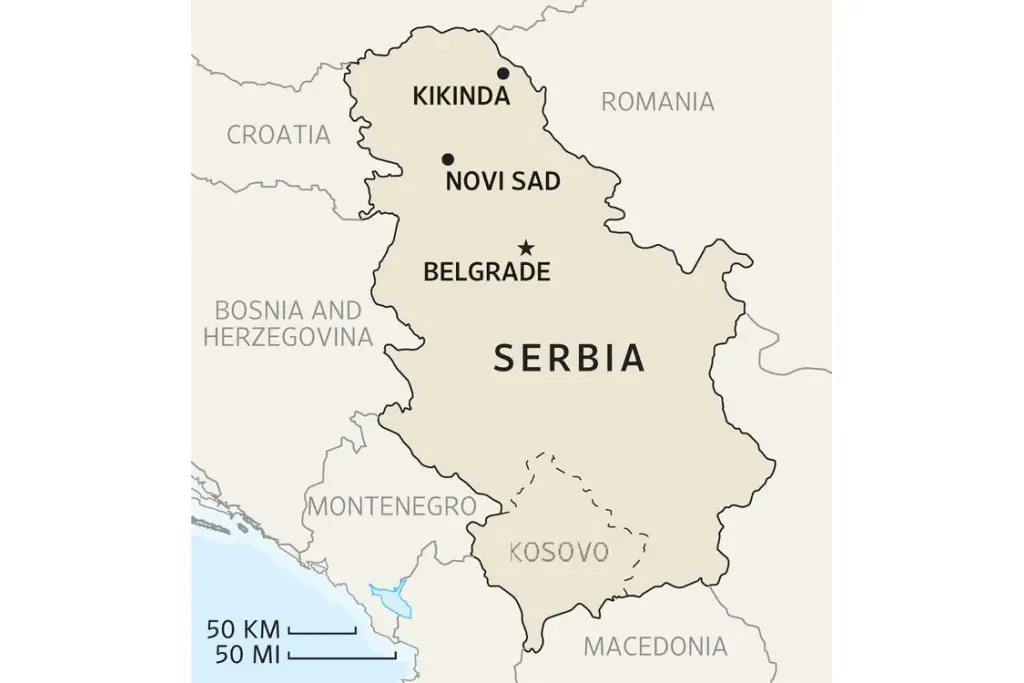
While strolling through Kikinda, we encountered a board displaying recent community deaths. Concerned about the water quality, we assumed there might be numerous untimely deaths. To our surprise, the majority were in their upper 80s and 90s. We chuckled, suggesting, that perhaps the water wasn’t as problematic as we feared.
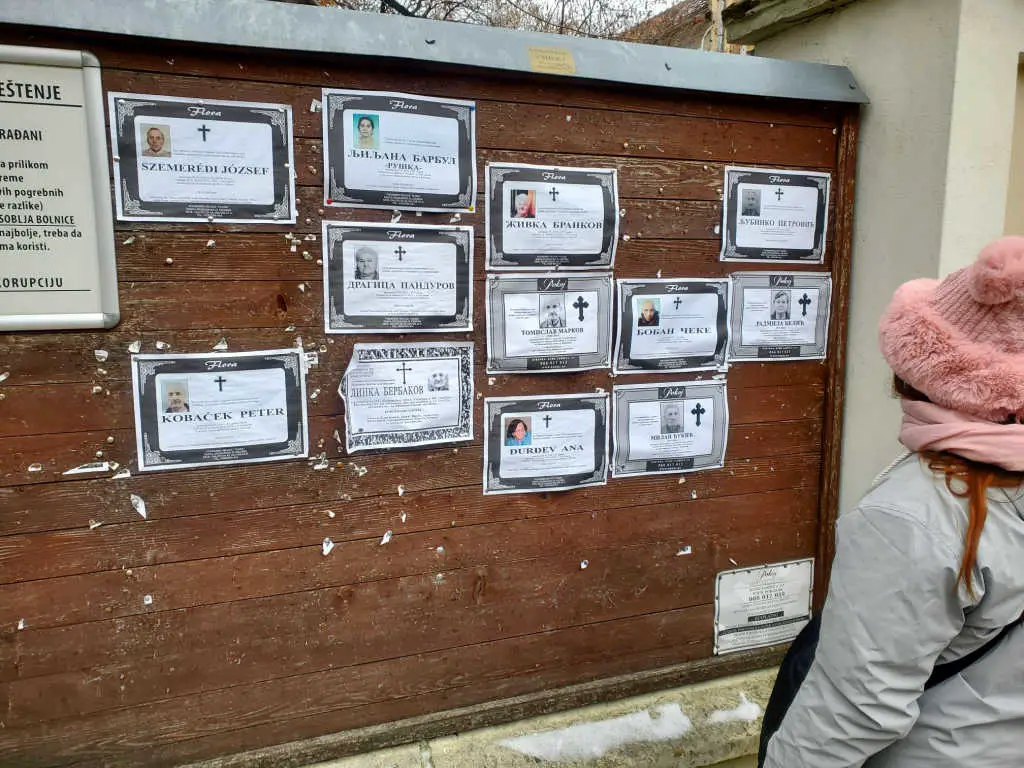
Jokes aside, given the substantial financial influx from Russia into Serbia, Belgrade showcases an abundance of high-end vehicles like Porsches, Mercedes, and BMWs—the country possesses considerable wealth. It’s disheartening to witness the lack of swift action by politicians in addressing the pressing water crisis. Of course, if politicians resided in these communities, the resolution of the water crisis would likely be fixed immediately.
What to Bring to Kikinda
Seasoned birdwatchers likely will have an established daypack ready to go. However, everyday travelers may benefit from some friendly tips on what to pack for a Kikinda owl safari.
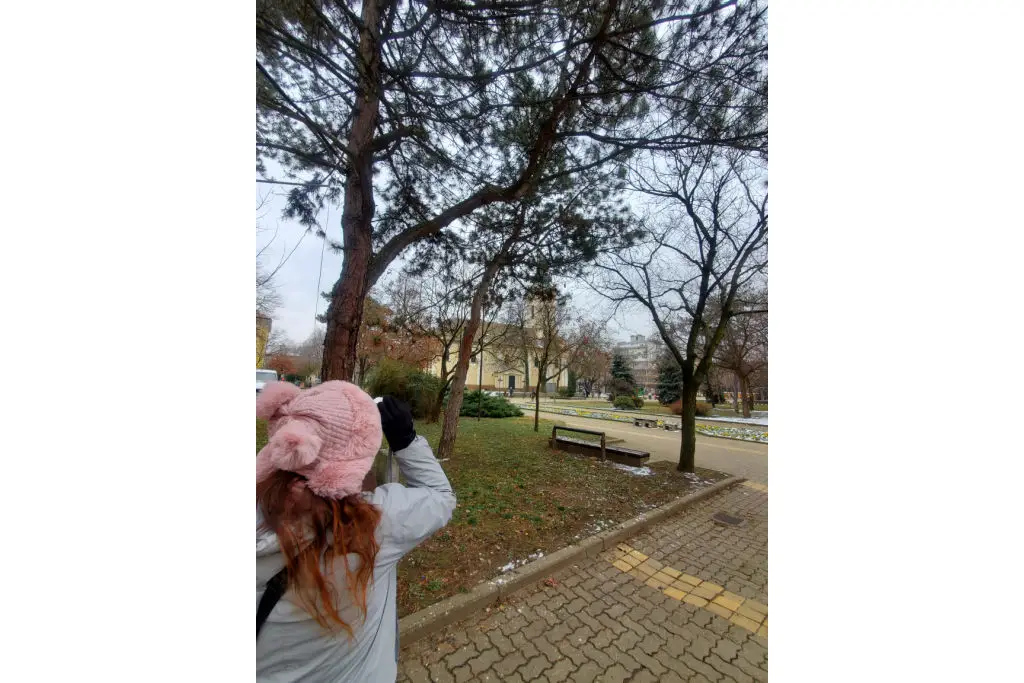
Our biggest piece of advice is to bring your warmest outdoor gear and some method to enhance your viewing. Winter evenings in Kikinda are frigid and you’ll want to stay out in the elements for as long as possible to observe the owls swooping and soaring all over the square.
If you plan on doing some prolonged nighttime viewing, consider bringing a heat source so that the cold weather does not rush you back indoors, especially if you’ve only planned one night in Kikinda.
Also, the above photo illustrates the typical spotting experience. The owls tend to perch on the higher branches. Therefore, a travel-sized pair of low-light binoculars and a small, yet powerful camera would be great for your birding field bag.
The Colder the Better
There is a saying around Kikinda that the colder weather, the better. While this is true, it probably relates to the fact that sound transmits better in colder air and owls use their sense of hearing to hunt prey.
In colder temperatures, the air density increases, leading to a more efficient transmission of sound waves. This phenomenon, known as higher sound conductivity, benefits owls in hunting.
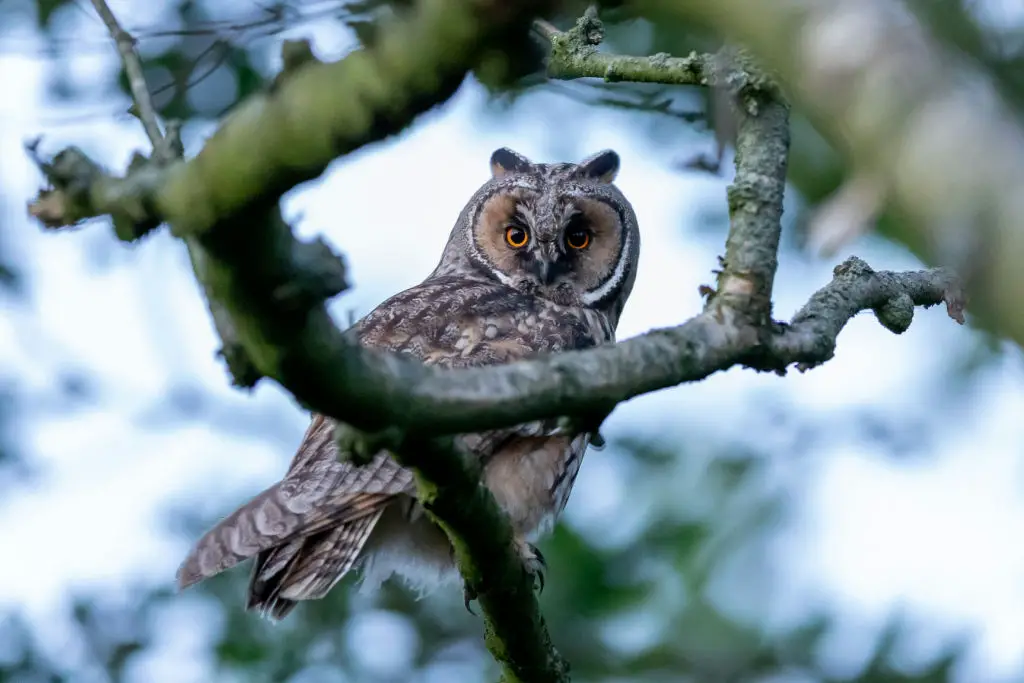
Owls’ specialized auditory adaptations, such as their facial disc and asymmetrical ear placement, capitalize on the improved acoustics in cold weather. The enhanced ability to detect and localize prey movements in these conditions contributes to the preference of owls for colder climates during hunting activities.
In January, the long nights and crisp air create an ideal setting for owl safaris, as many owl species, including long-eared owls, are nocturnal hunters. Birdwatchers can maximize their chances of encountering these fascinating birds by venturing out during the late afternoon and evening when owls are most active.
It’s important to note that while January may offer optimal conditions, the shoulder months of December and February can also provide rewarding experiences. During these periods, long-eared owls may still be active, and birdwatchers might encounter a diverse range of owl behaviors.
Locate the Owls – Be Careful Who You Ask
Similar to our own experiences, it’s quite amusing to observe how many travelers undergo a shared encounter when engaging with the locals in Kikinda. Over and over again, enthusiastic individuals arrive in town, full of curiosity about the owls, only to be met with quizzical expressions that seem to ask, “What owls are you talking about?”
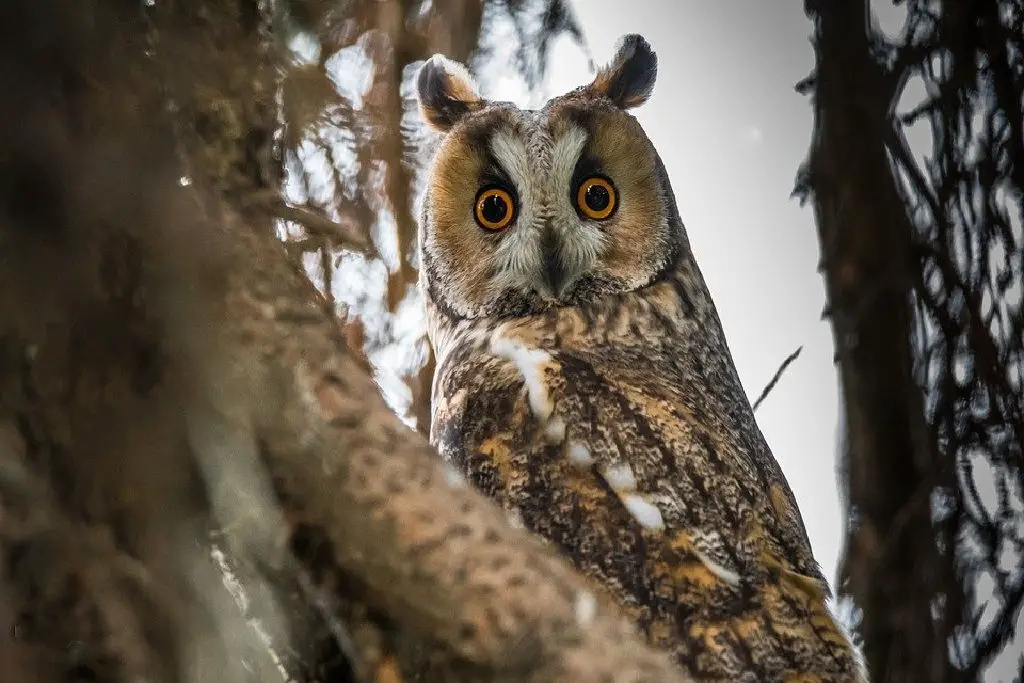
Take, for instance, the amusing tale of a dedicated birdwatcher aware that the initial groups of owls typically show up in September. During his visit in November, he approached a local vendor in the square to inquire about the owls. The vendor confidently asserted, “The autumn is too warm, and I haven’t seen any… they aren’t here yet.” Undeterred, the birder headed to the square and, to his delight, spotted numerous long-eared owls perched in the trees.
Therefore, don’t worry if the locals claim they haven’t spotted the owls. Somehow, many have become accustomed to overlooking these magnificent creatures nestled in the coniferous trees throughout the town.
Know Where to Look
Upon our arrival in Kikinda, we skirted around the edge of town wandering around quiet parks and looking up in high trees. Our accommodation host simply stated, “Yes, the owls are here, in the city center.”
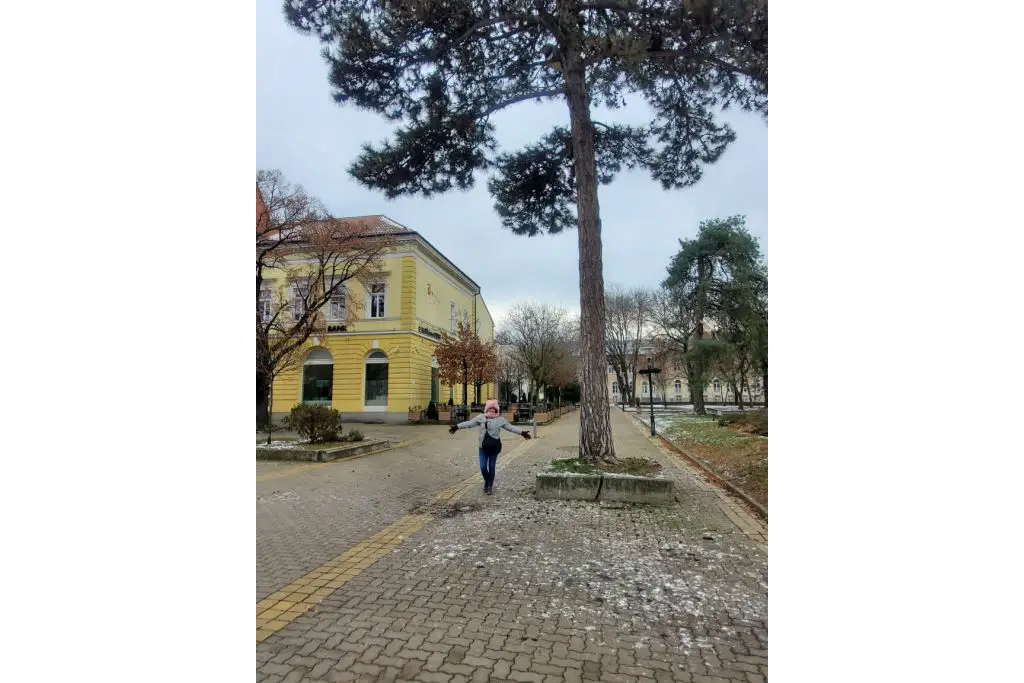
Although usually elusive, spotting the long-eared owls in Kikinda is surprisingly straightforward. Just follow these simple steps:
- Visit the Serbian Orthodox Church at the center of Kikinda.
- Identify the coniferous trees surrounding the square.
- Examine the ground and proceed to the tree with the most owl droppings underneath.
- Look up.
It’s as simple as that.
Be Sure to See the Other Highlights
The Kikinda owls roost during the day, asleep in the trees. After some daytime viewing, you may want to explore some other local attractions until night falls and the birds become active. There are a few points of interest in Kikinda.
Kikinda National Museum
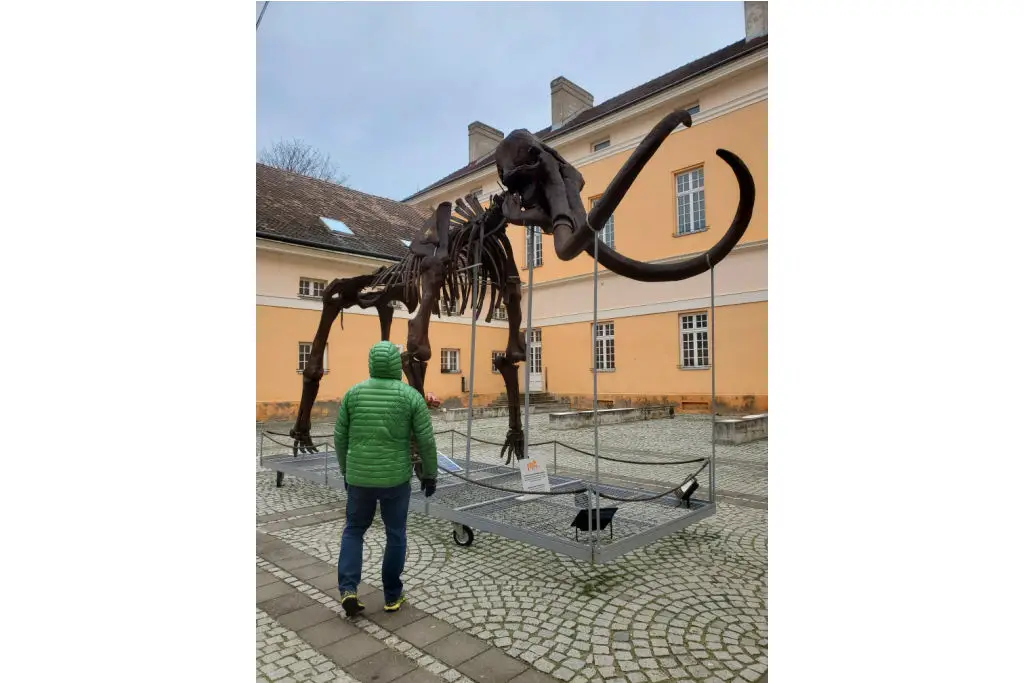
The Kikinda National Museum has archaeological artifacts, historical exhibits, and a notable natural history section. The highlight is the famous “Kika,” a mammoth skeleton discovered in the region. With 90% of the specimen intact, it’s one of the best-preserved mammoths in the world. It is truly a natural treasure in this small Serbian town.
Generala Drapsina Street
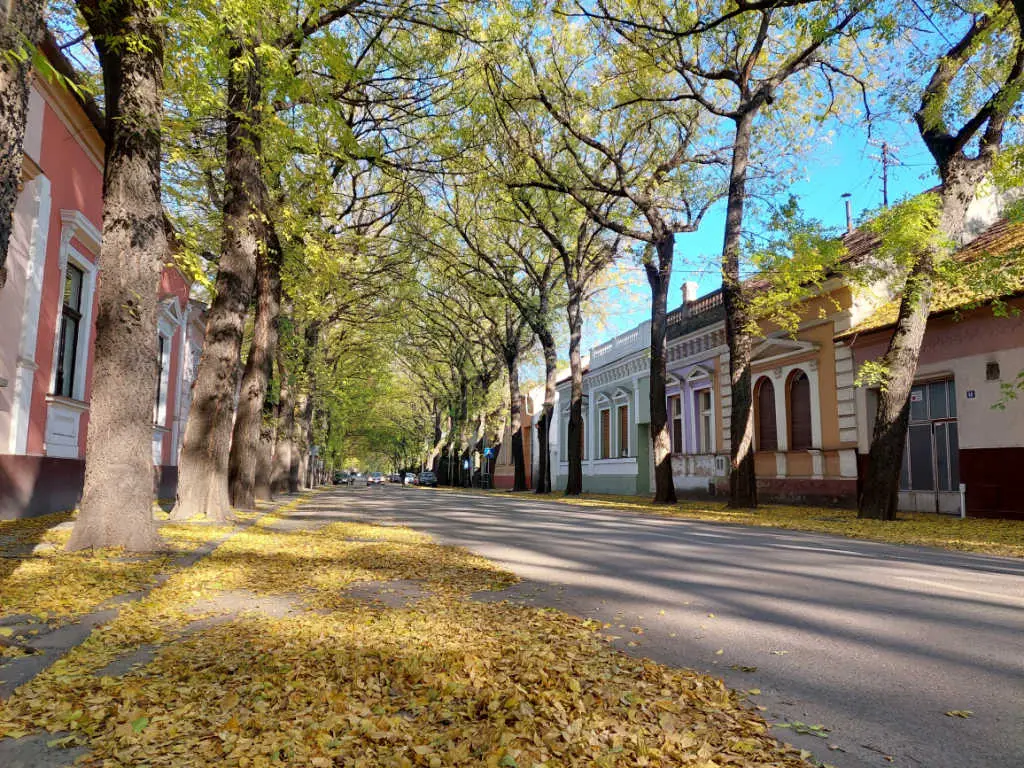
Considered the most beautiful street in Serbia and awarded one of the most beautiful streets in the world, it’s worth a stroll or drive on Generala Drapsina Street under the tree-lined canopy.
Terra Museum
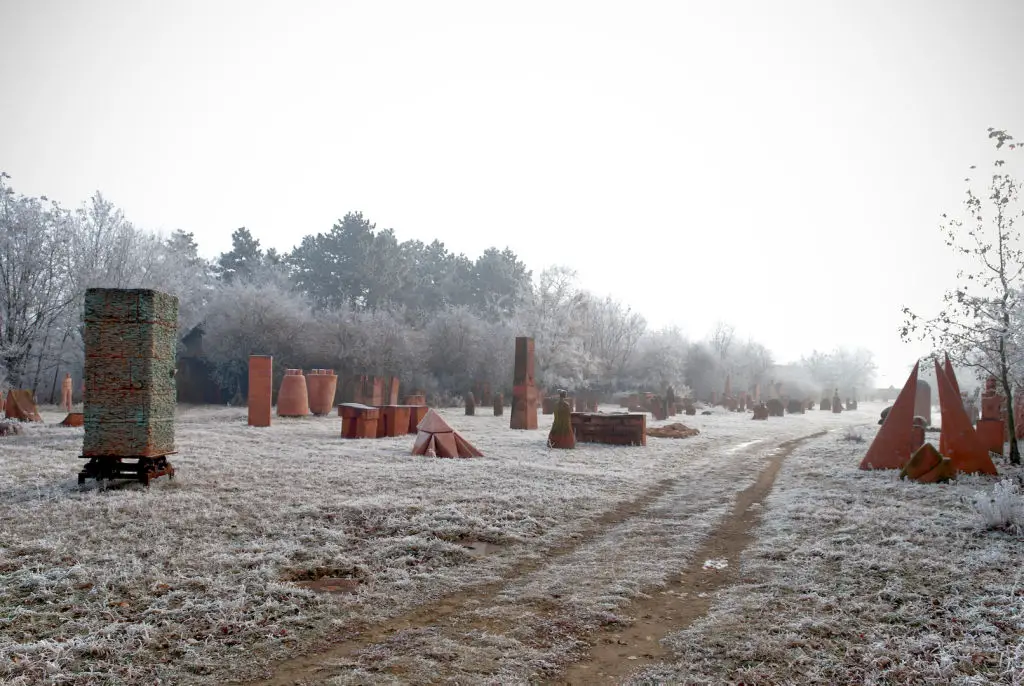
Sculpture plays a significant role in the culture of Kikinda. Each July, the Terra Museum hosts the International Symposium Terra. In winter, you can visit the museum to view the collection of nearly 1000 terracotta sculptures.
While terra-cotta is typically celebrated in Kikinda, there’s an interesting story about how the community protested to remove a phallus-shaped owl statue placed at the city’s entrance.
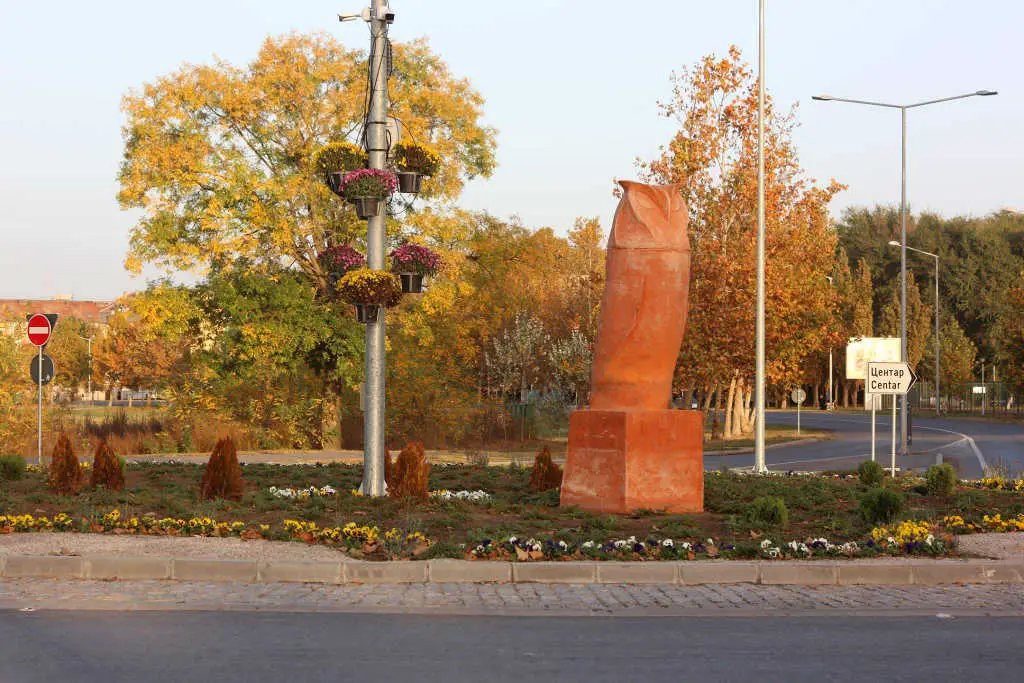
Spomenik Sculpture Tour
Throughout former Yugoslavia, spomeniks are historical monuments that often go overlooked due to lack of information onsite. These Yugoslav war memorials offer a glimpse into the region’s past and it’s worth the time to read more about them. Kikinda has a few spomeniks to explore during your owl safari. The Spomenik Database is a great reference tool for traveling around Serbia.
Download the Merlin App
The landscape in Serbia is perfect for birdwatching. Birds of prey are drawn to the country’s flat plains and open spaces, ideal for hunting small rodents and mammals. Additionally, Serbia is situated at the crossroads of Central and Southeast Europe. Migratory birds use this strategic location as a layover stop when traveling between breeding and wintering grounds.
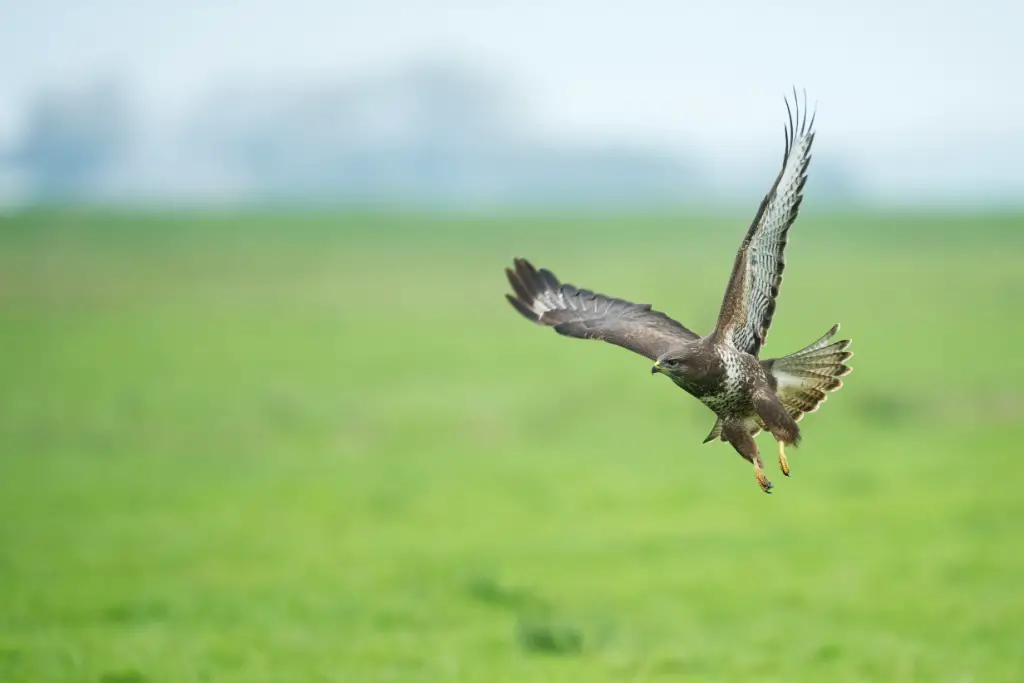
The route from Belgrade to Kikinda offers some spectacular birding opportunities. Be on the lookout for kestrels, hawks, Golden Eagles, and Common Buzzards. No joke—every few miles there is a bird of prey sitting on a fence or tree.
Download the free Merlin Bird app to help identify all the different species spotted along the way.
Parking Around Kikinda
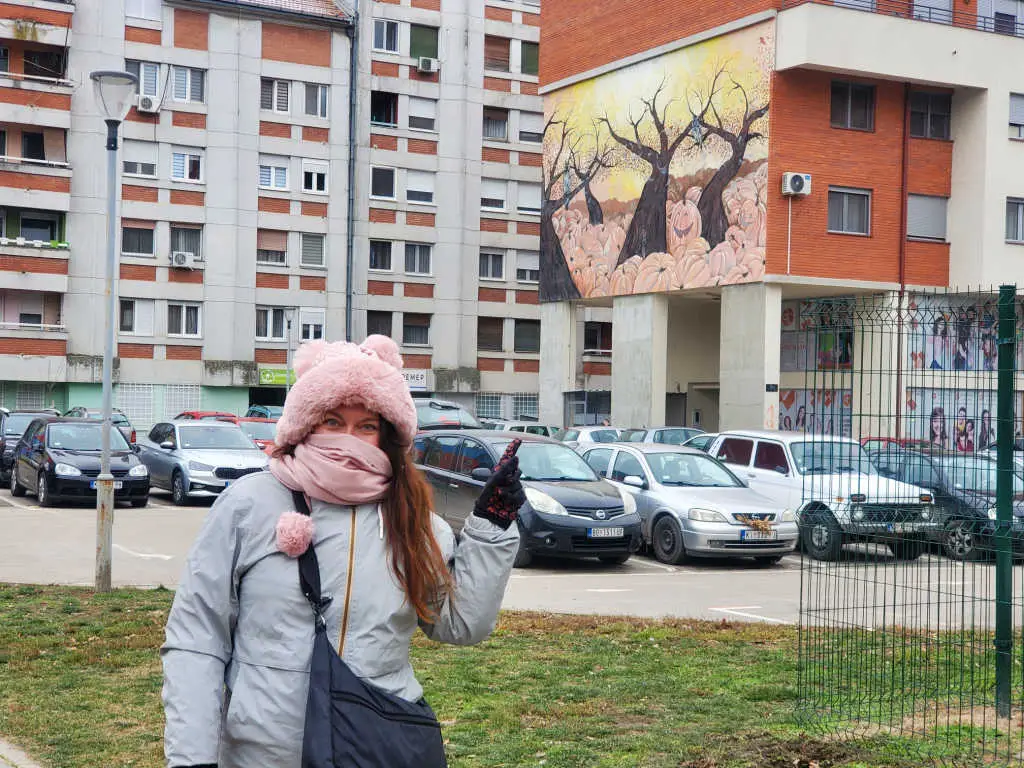
Parking in Kikinda is only free on Sundays. The city has an SMS pay-to-park system with online instructions in several languages. If you don’t have a working SIM in Serbia, then visit the service counter at Vojvode Putnika Street 4.
You are in the right place if you enter a building and it looks like an indoor farmers’ market. With the help of a friendly local, we purchased an all-day parking pass.
Every year, Kikinda becomes a hub for long-eared owl migration. Though anticipated to attract wildlife enthusiasts, the town remains surprisingly tranquil during the peak of this captivating natural event. Our suggestion: seize this incredible chance today, as it might soon attract a surge of tourists.
We Need Your Help
Did you find this article helpful? If so, bookmark it and when you’re planning your next vacation, click on any of the links below before finalizing reservations. You’ll get the best price, we’ll earn a small commission, and you’ll help support future articles.
Thank you!
BEST TRAVEL SEARCH ENGINES
🏘️ Book Accommodation
We use Tripadvisor to compare prices and reviews in advance and check availability
✈️ Book Your Flight
To find the cheapest flight options, use Skyscanner to find the most suitable choice for you
🚗 Reserve Rental Car
Use Discover Cars to compare prices and view the largest selection of vehicles

